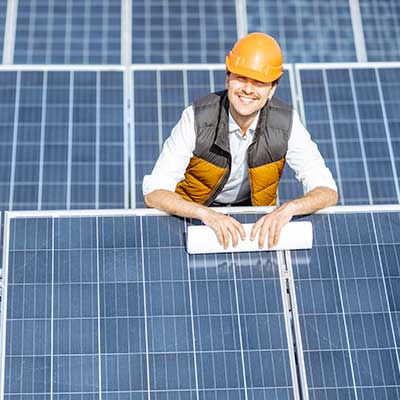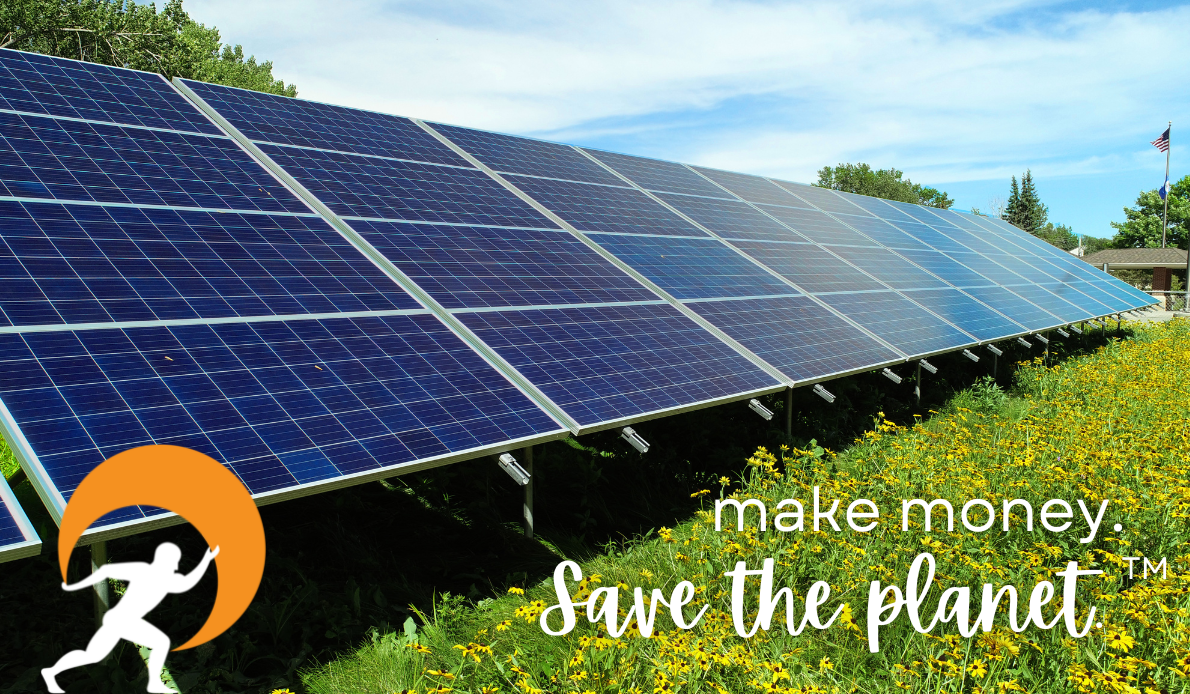FAQ: How Will Onsite Solar Impact My Roof?
When a building owner considers installing on-site rooftop solar, the first questions they typically ask involve how the system will be mounted to their roof and and what it means for their roof performance and warranty. That is quickly followed by concerns about how it will impact building operations and facilities personnel.
Will Solar Damage My Roof?
We understand that your roof is the first line of defense for protecting your building and the last thing we want to do is compromise that. That's not the legacy we want to leave behind. We perform rigorous analyses on every roof being considered for solar, and we're not shy about telling you if we see trouble. If there's a way forward we'll find it, and if there's not, we'll give you our honest, professional opinion.
We have helped hundreds of customers navigate their concerns about the potential impacts of solar on their building. Read on to find some helpful information regarding how solar will impact your roof and your building's operation.
In this article we'll cover solar FAQs related to the following areas:
- How is the array attached?
- How does solar affect roof performance?
- Will solar void my roof warranty?
- How will solar impact building operations?
1. How is the array attached?
There are two common types of immobilization used for roof-top solar arrays on flat roofs. Here's a quick overview of the options.
Fully Ballasted System
Most of the solar arrays we install are “ballasted racking” systems. Ballasted racking uses concrete blocks that lie on top of the racking to immobilize the solar array on a flat roof. The racking is the supportive framework that holds the solar panels in place. Specially designed pads are placed between the racking and the roof membrane to protect it. The amount of ballast required is determined by the roofing manufacturer to warranty their product and takes into account the size and shape of the array, the wind exposure, and the height of the building.
Hybrid-Ballasted System
For multi-story buildings and in non-urban areas where wind loads are higher, a hybrid-ballasted system may be necessary, which uses a combination of ballast and roof penetrating anchors to immobilize the array. The number of roof penetrations for these systems is determined by the racking manufacturer to meet wind load requirements. When a hybrid-ballasted racking system is required by the racking manufacturer, iDEAL partners with local, certified roofers to perform the work.
2. How does solar impact roof performance?
Besides harnessing solar energy to generate renewable electricity, solar panels also act as a protective barrier between your roof and various external elements like wind, rain, snow, and falling debris. When done correctly, solar panel installation can help keep your interiors cool while protecting and extending your roof's life, thus increasing your property's overall value.
Damaging Sun
The most common solar panels used can protect your roof from the sun’s harmful rays by absorbing sunlight that otherwise would directly heat your roof surface, drying it out and potentially causing bleaching and deterioration. There is space between the panels and the roof where air can flow to help cool underneath the panels. Since the solar panels effectively act like a shade tree over the roof, they not only help keep the roof safer from UV damage, they can also help reduce the temperature inside the building, further reducing utility expenses.
Bad Weather
Inclement weather such as snow, hail and even excessive wind and rain can cause damage to a roof over the years. Falling limbs and debris are also a threat to your roof during a storm event but luckily solar panels are more durable than other roofing materials. A panel is rated to 5400 pascals of pressure on the glass, that’s the equivalent of a 1” steel ball hitting the panel at 60-70 mph. They are designed to withstand 120 mph winds (the average tornado is 70 mph). Structural engineers review every building being considered for solar, performing calculations that consider array size and shape, building height, and wind exposure risk to determine how much ballasting (weight) is required to secure that array during a high wind event in that exposure category.
2. Will solar void my roof warranty?
We understand that your roof is the first line of defense for protecting your building, and because of that, we make it our first priority when we start a new solar project. From beginning to end, we make sure our customers active warranties are preserved during the solar construction process.
- We work with you to gather your existing roof warranty documentation and prepare the paperwork required to preserve it.
- When constructing the array, we provide extra layers of protection between your roof and the solar racking, selected specifically for your roof type.
- After construction is finished, most roofing manufacturers perform an inspection of the roof as a final step to preserve your warranty (to re-instate your warranty).
4. How will solar impact building operations?
iDEAL Energies includes O&M services for all of our public entity customers to ensure all components are functioning and operating optimally. Real-time remote monitoring allows us both to keep an eye on your solar array and troubleshoot any issues that arise so there are minimal impacts to energy production.
Low Maintenance of Array
There is no need to clean the solar arrays or to remove snow during winter months. The 10 degree angle of the panels in addition to the dark color of the panels absorbs the suns heat and facilitates the snow melting off. Our energy production estimates take into account partial snow coverage in the winter months.
Provides Access for Routine Maintenance
When designing a new solar array we assess roof drainage routes and map existing rooftop equipment and conduit. We thoughtfully design systems to ensure drainage is not impacted and all rooftop equipment remains accessible for regular maintenance.
Respects the Structural Roof Capacity
Every new solar project starts with visual inspection of roof condition as well as a thorough roof assessment to evaluate the roof’s structural integrity. Our engineers perform calculations to ensure the system is designed to meet snow and wind loads specified by local building codes. These designs are then approved by a professional engineer prior to installation and are submitted to the local building inspection authority for permitting.
Designed with Fire Safety in Mind
Solar will not increase the risk of fire or impede fire fighters’ ability to extinguish a fire. We design all PV systems in accordance with recognized fire codes that identify best practices for rooftop PV systems. The inverters we specify are equipped with Rapid Shutdown protection, which is for quickly de-energizing your solar array in case of an emergency. The rules governing rapid shutdown are laid out in the National Electric Code (NEC) with more stringent guidelines that can vary by municipality.
Your First Line of Defense
By hiring a reputable installer to design and construct your solar array, a rooftop solar array should have no negative impacts on a building. We have helped hundreds of customers navigate their concerns about the potential impacts of solar on their building. From start to finish, we take every precaution to mitigate or eliminate all risks and to ensure that your building, your roof, and your bottom line are well taken care of.
About iDEAL
We are developers, engineers, electricians, finance wizards, and O&M gurus.
Our solar A-Team has installed over 450 commercial systems with over 100+ projects under construction across multiple sectors including commercial for-profit businesses, schools, local governments, and non-profits. By marrying our technical expertise with a combination of tax incentives, utility grants, and multiple financing options, we provide cashflow positive projects from Day 1.
Share this
You May Also Like
These Related Stories

How to Choose a Solar Installer: Asking the Right Questions

Solar Helps Cities Meet Sustainability Goals
-1.png)




.png?width=618&name=CTA%20-%20Solar%20Ready%20Roofs%20(1).png)



No Comments Yet
Let us know what you think